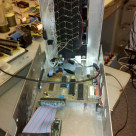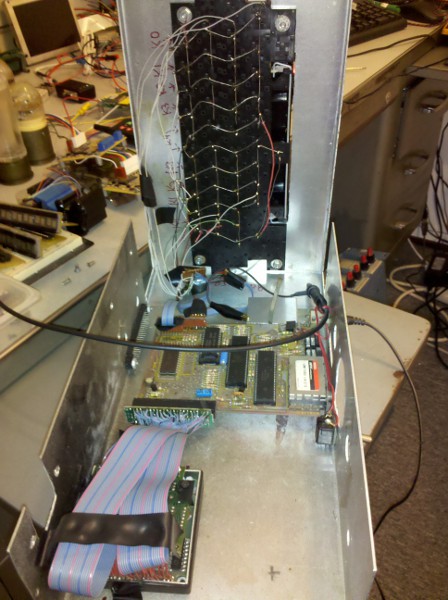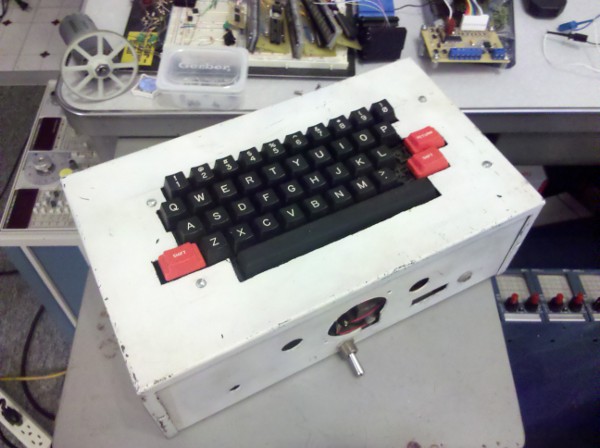WayBack: T/S1000
Posted by FirmWarez on 5 Sep 2012 in Blog | 0 comments

So this recent thread about “your first bit of code” on the Defcon forums got me thinking about my old T/S1000, my first computer.
The Timex/Sinclair 1000 was a Z-80 based home computer, back in the VIC20 TV-as-monitor era. I actually thought it a bit amazing, consider it’s super simplistic design. A Z-80, a 6116 2kx8 SRAM, a PROM, some glue logic, and a custom chip…at a time when most other computers were chock full o’parts. External storage was a casette deck. I had a real “high quality” RADio sHACK official computer tape deck, and the “wibbly-wobbly” (as I said on the Defcon forum) 16k RAM pack. Wibbly-wobbly because it plugged in to the back of the computer with an card-edge connector, and if you bumped it, you would create intermittent connections that would cause the computer to crash. Which you solved by unplugging the power supply and plugging it in again. And wibbly-wobbly because it’s something The Doctor would say.

It was with this computer that I got in to assembly — I was enraptured with the idea that I was writing actual, get this, “machine code”. Wow. Cool.
I wrote many programs, mostly games, on this. In BASIC. I wrote a game called “Viper”, inspired by Battlestar Galactica (no, not that one, when Starbuck was all blonde and hot and stuff, but that old one, when Starbuck was some guy you hoped would invite you to his parties), that involved leaving the Galatica, engaging some targets, and flying to a planet or base or something. I don’t remember much about it, but I do remember making animations with the limited black&white sprites available on the T/S1000. Uh yeah, kid, we used to do stuff like that.
Something that I think was an indicator of things to come in my hacking and professional career. The keyboard on the T/S1000 was a notorious membrane keyboard. I obtained a surplus keyboard from RADio sHACK, and spent an entire weekend modding the T/S1000 to have a “real” keyboard. Hardware hacking. Yeah, guilty as charged.
This involved putting it in a hideous aluminum box, painted white, that probably came from one of my grandfather’s projects (he was a EE for SouthWestern Bell, and in to amateur radio, back when real radios glowed in the dark). I added a power switch, as unplugging/re-plugging was the only way to power cycle the beast (which was needed regularly when a 10 year old was hacking assembly code).
I remember it taking forever to use a pair of hand nibblers to cut the box for the keyboard. Maybe not the best method, but it is what I had. That’s what us hackers do, isn’t it? Don’t take no for an answer, don’t let the harsh reality get in the way of what we want to get done. Another challenge was determining the membrane keyboard matrix and transferring that to the surplus keyboard.
The best thing about these old machines, VIC20s, T/S1000, the whole lot, was turning a computer on, and in an eye-blink it said “READY”. If only a modern WinBlowz machine could boot so fast!

« WayBack: Discrete 74xx Project | Did Somepony say “Lightsaber”? »
